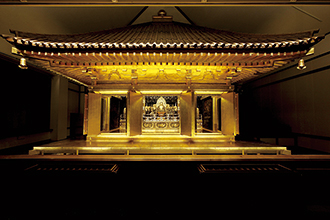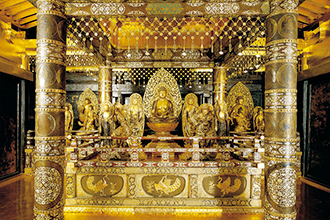niponica is a web magazine that introduces modern Japan to people all over the world.
2019 NO.25
Japan’s Decorative Art of Urushi

Beauty Created From Strength and Delicacy
Shikki has colored Japan, making everything beautiful
The Konjikido Golden Hall at Chuson-ji Temple. A shining building that today conveys the golden culture of Hiraizumi, which bloomed during the time of Oshu Fujiwara. Japan's first "National Treasure" which brought together the techniques of the time, such as raden (mother of pearl in-lays) work. (Chuson-ji Temple. Photograph provided by the temple.)
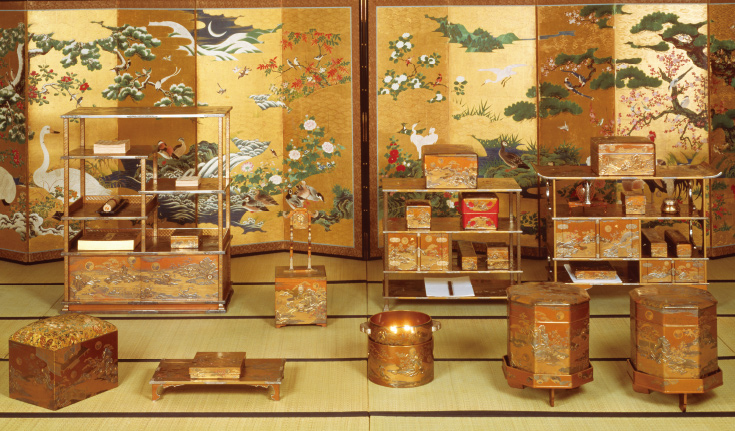
Wedding furniture for Princess Chiyo, the eldest daughter of the third shogun, Tokugawa Iemitsu. The collection contains a total 27 exquisite items that use techniques such as maki-e. “Hatsune Trousseau” from around the 17th century (Tokugawa Art Museum. Photograph provided by © The Tokugawa Art Museum Image Archives / DNPartcom.)
Typical decorative techniques
The long history of shikki and many areas famous for producing it gave rise to a wide variety of techniques. Shikki presents us with a gorgeous range of looks achieved through the addition of decorative designs after the undercoat and top coats have been applied.
Maki-e
This is a decorative technique in which a thin brush (known as a maki-e-fude) is used to draw a pattern in urushi; then, before the urushi is hardened , metallic filings such as gold or silver, is sprinkled on top to bring out the design. This metallic embellishment, which beautifully brings into relief the gold and silver patterns, is a typical technique used in the urushi Kōgei in Japan.
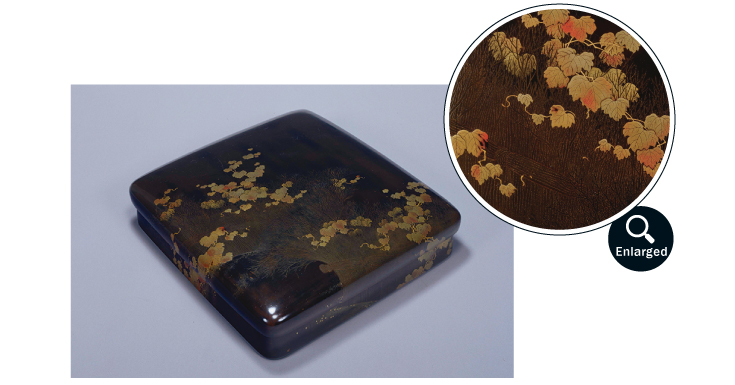
・Finest quality ink-stone case. The picturesque design is expressed using Maki-e. “Writing box lacquered with metal powder, the picture on top: ivy on the brushwood-fence” c.17th century (Tokyo National Museum. Photograph provided by TNM Image Archives.)
・Some metallic filings applied to the tip of a leaf gives the impression of the leaf just beginning to change color.
Raden (Mother-of-Pearl)
This is a decorative technique whereby the shiny, pearl-like layer from the inside of a shell, like the "great green turban" (Turbo Marmoratus), is thinly sliced, cut to shape and polished, and inlaid into or pasted onto the surface of the shikki. Characteristically, this creates a glittering, rainbow-hued pattern that is also used together with maki-e.
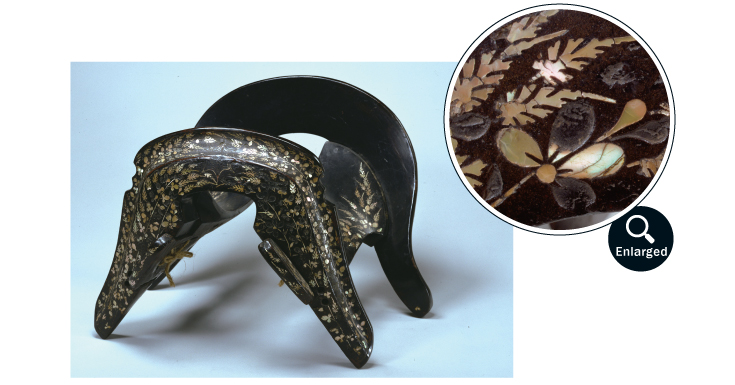
Equestrian equipment/saddle. A sparkling, elegant design with flowers cut out of shells on a surface coated with black urushi. “Saddle with bush clover motif in mother-of-pearl inlay” c.17th century (Tokyo National Museum. Photograph provided by TNM Image Archives.)
Chinkin (Gold Inlay)
This is a decorative technique whereby a design is engraved with a blade into an urushi-coated surface and fresh urushi is rubbed into the grooves. Then, the excess urushi is wiped off the non-engraved parts and powdered gold leaf is pressed into the grooves. This technique enables fine, delicate patterns to be drawn, as the gold powder, etc., remains along the etched lines and in the dots.
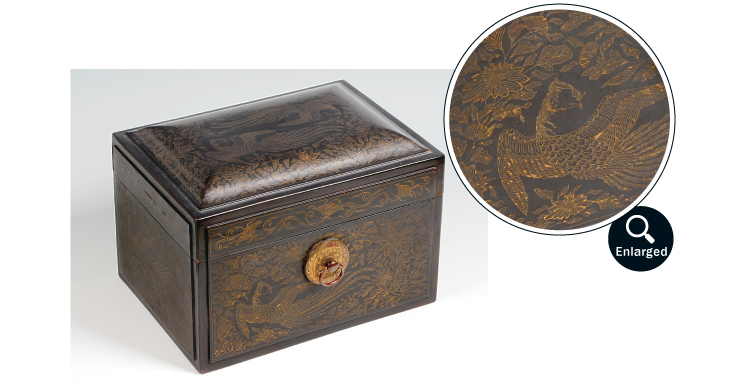
Tool box with Phoenix pattern drawn using the chinkin technique. A work from the early period of chinkin in Japan. “Small Box with Gold Inlay Design Depicting Phoenix” c.16th century (Shirayama Hime Jinja Shrine. Photograph provided by the shrine.)






